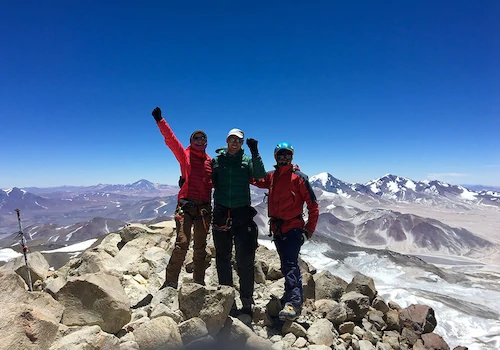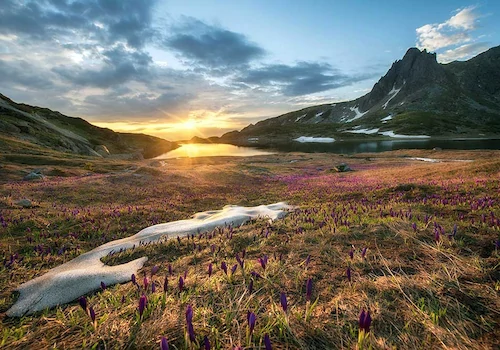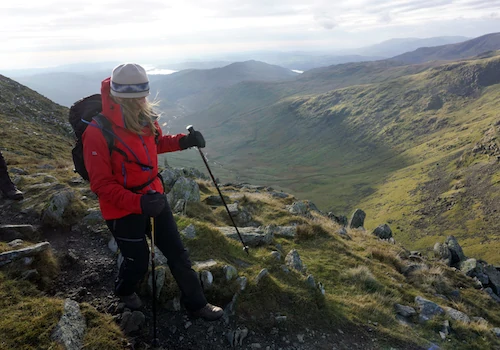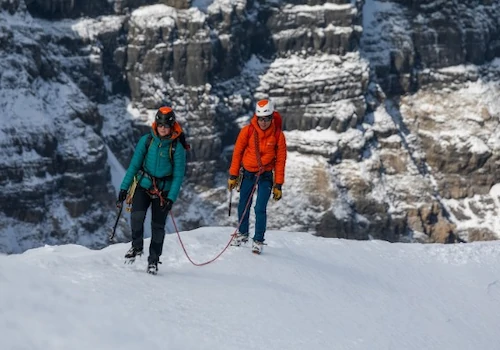
- Expeditions
By Region
By Month
By Grade
By Height

- Treks
- UK & Alpine
- Schools
- Hire
- News
- Shop
Travel light, Trek or Climb anywhere in the world with just 4 layers

Expeditions and Treks can both require specialist equipment and it is important you plan ahead to ensure your gear is appropriate and fits!
You may well have existing equipment that may work or you may consider renewing older equipment, if in doubt ask us for advice. When buying new equipment you should aim to purchase the very lightest gear that will serve the purpose and be functionally good. Remember Grams add up to Kilos, purchase it as if you are carrying it all! (At least that way you will also be helping the porters if provided). Layering is important and when you are familiar with your gear and understand how each layer will work with the others, you can then decide how it can be adjusted.
There are four basic layers you will need on most of our trips
- Base layers
- Mid layers
- Outer Layers
- Insulated Down Jacket Layers
Base Layers
A Base Layer provides comfort by keeping the skin dry. Also called Inner Layer or first layer
Top and Bottom
These should be made of synthetic fibres such as Capilene or Merino wool or the latest technology being a fabric called Merino Cocona (MeCo)which combines the best of synthetic fabric with Merino Wool to produce a garment that is less itchy, non-smelly, retains its shape better, is more easily washed and can be produced in three weights: lightweight, medium-weight and heavyweight. It is important they are a snug fit and avoid cotton. An alternative to a crew neck is a Zip neck top which allow more ventilation options. You may wish to consider a set of white (or light coloured) garments for intense sunny days especially if on a glacier.
Regular Underwear
Pack for two or three changes, although ladies might want a few more. Look for synthetics such as Capilene. Ladies should also consider a number of synthetic sports-type bras.
Men’s Base Layers
Women’s Base Layers
Mid Layers
A Mid Layer is needed in cold weather to provide additional insulation. Your mid layer should be more loose-fitting than the Base Layer, as this leaves insulating air between the layers.
Fleeces
Technologies have advanced a lot since the traditional days of heavy fleece and we generally do not recommend fleece as Primaloft, soft-shell and active shells tend to be less bulky, lighter, windproof and sheds moisture.
Active Mid Layer
These are perhaps the most useful garments available and functionally brilliant for the active walker, mountaineer or climber. They are normally made of Pertex or Driclime with a thin micro fleece type fabric internally and are engineered to draw moisture away from your skin to keep you dry, warm and comfortable in an active environment. Worn next to a base layer they are functionally better than soft shell but tend not to look quite as smart…so it’s a choice – function or appearance! Different weights of construction/fabric are available.
Men’s Active Mid Layer
Women’s Active Mid Layer
Soft Shell Jacket and Pants
Works as an insulating layer that provides reasonable protection against the weather and is normally worn over a base layer. The air permeable varieties are better as they breathe more than soft-shell fabrics with a wind block.
Men’s Soft Shell Jackets
Women’s Soft Shell Jackets
Insulated Primaloft Jacket and Pants
Used as your final insulating layer when other layers are not warm enough, it replaces what used to be a thick fleece, but Primaloft (a synthetic material) is far superior. Ideally it should be capable of wearing over your outer shell as in certain adverse conditions you may not want to take off your shell to insert this layer! It is water and wind resistant (not waterproof), the outer layer is normally made of Pertex.
Summary – you will need an Active mid layer or Softshell and an Insulated Primaloft Jacket
Men’s Primaloft Jacket’s
Women’s Primaloft Jacket’s
Outer layers
The Outer Layer protects from wind and water. Also called a shell layer which works as protection over the other two layers.
Waterproof Shell Jacket
Often referred to as waterproofs or hard shells (Goretex or Event fabric) provides protection against the wind and rain. It is worn over the base or/and mid layers. It should not have any built in insulation as this makes them less versatile in warmer wet weather. New technologies in materials have seen Waterproof and Shell Jackets produced in much lighter weight materials whilst retaining the same level of protection, however over many years they will not be as durable but on a day to day basis they are lighter and more packable.
Men’s Waterproof Shell Jackets
Women’s Waterproof Shell Jackets
Waterproof Shell Trousers
Full length zips Crampon Patch, Bum reinforced, knees and seat as fabrics tend to wear faster in these areas.
Men’s Waterproof Shell Pants
Women’s Waterproof Shell Pants
Insulated Down Jackets
Insulated Down or synthetic Down Jackets are light and highly compressible. Designed to trap body heat and buffer us from colder external air.
This layer gives you your ultimate warmth, worn during breaks, around camp and climbing in cold conditions. There are many varieties available of differing qualities; you need to consider the following:
Fill Power – this indicates the actual quality of the down filling e.g. 650 fill power (a bit like tog rating on quilts). Two measurement systems are used US and EU which you should be aware of when comparing quality and ultimately warmth. US 750 is equivalent to EU 650 so you have a tendency to think a US product is actually warmer (e.g. Mountain Hardwear and North Face are US, be careful!). The down filling will be goose down, duck down or a combination of the two. Goose down is the best, being warmer, lighter, softer, more packable and of course more expensive! Generally the higher the fill power is, the lighter and more compressible the down will be.
Quantity of Down – this indicates the amount of down contained in the garment. This is measured and given in grams so look beyond the “headline” fill power number. A 650 fill power jacket with 300grams of down will be warmer than a 650 fill power jacket with 250 grams of down.
Construction of Garment – down products can be stitched/sewn through, or of a baffled construction (sometimes referred to as box construction). Stitched through (is cheaper) does not insulate as well as baffle construction. However, on lower peaks (below 6500m) this is not quite as important.
Outer Fabric – the jacket should be water and wind resistant (very few are also waterproof and this would add unnecessary weight), but if it’s cold enough to wear a down jacket it is likely to be snowing (not raining) which tends to bounce off and, therefore, being waterproof is probably not necessary.
Fit – Down jackets need space to loft so don’t buy them too tailored, they should also be capable of going over the top of your other clothing. Down garments are normally made large enough to fit over other clothing so sizing up is not always required.
Care – it is important to protect your jacket from getting extremely wet as it will lose its insulation, no problem with the odd shower. Ideally you should have it professionally cleaned or follow specific manufacturer’s instructions for home cleaning. Don’t store it for long periods of time packed away in stuff bags, you will crush the down making it less efficient!
New Technologies – Hydrophobic down has a unique and innovative water resistant treatment applied directly to the down itself which boasts enhanced performance in damp wet conditions. Berghaus currently use this down in the jackets listed below.
Remember getting a jacket that is too hot can be worse than one that is not warm enough as you will overheat and perspire to the point that you will want to remove it (and then freeze!)

About Dave Pritt
Dave Pritt is the Director of Adventure Peaks. With over 30 years of mountaineering feats, he is a very experienced high altitude mountaineer who has led expeditions to K2, Broad Peak and five Everest expeditions. Dave has completed the 7 summits, led an expedition to Ski the South Pole Last Degree, Satopanth in India and in 2007 he guided Ian McKeever to break the world record for the seven summits in 156 days. He is lucky enough to have climbed on the majority of our advertised peaks, but the Tien Shan remains his favourite destination.





